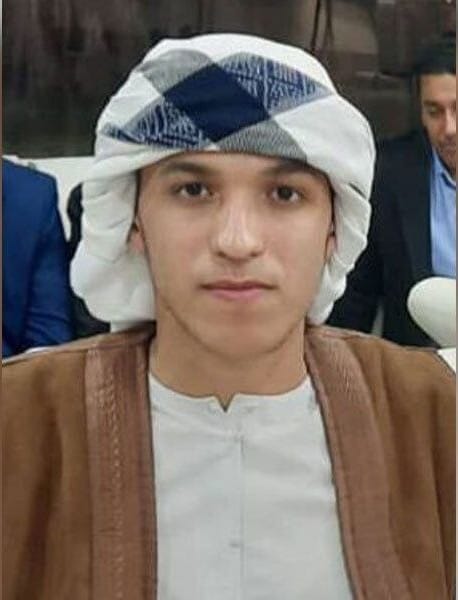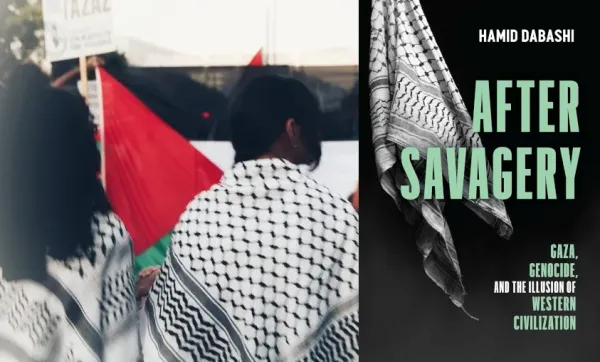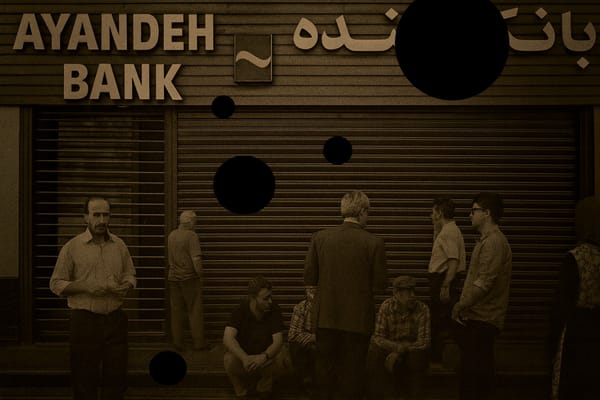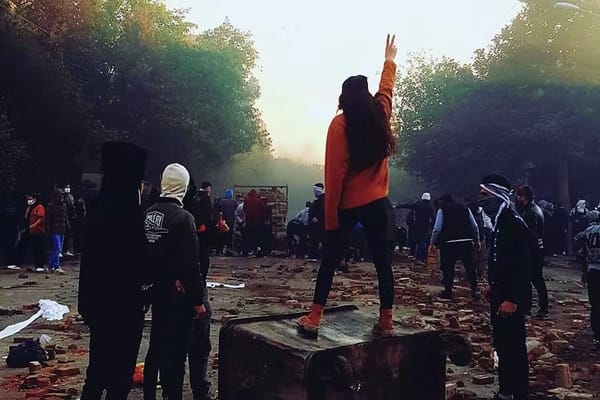Dispossessing Life: The Urban Machinery of Erasing Small Livelihoods
Ahmad Baladi’s death exposes a system where “urban order” masks dispossession. Small livelihoods are erased through legal procedures that present poverty not as a social condition, but as an administrative offense.

Siyavash Shahabi
In November 2025, Ahmad Baladi, a 21-year-old worker and university student in Ahvaz, set himself on fire in front of municipal agents. For more than two decades, his family had survived by running a tiny kiosk in Zeytoun Park, a kiosk that city enforcement officers had now deemed “illegal.” At first glance, official media framed the incident as a “tragic accident” or a “legal dispute.” But that reading is willfully shallow. Ahmad’s death reflects a bureaucratic logic that now governs the treatment of the urban poor across Iran, from Tehran to Ahvaz.
In the language of urban planning, terms like “redevelopment,” “renovation of dilapidated structures,” and “landscape improvement” sound neutral. In practice, they are legal instruments for expelling low-income people from public space. These projects nearly always serve two simultaneous aims: first, to increase land value and accelerate the circulation of capital; second, to remove the visible signs of poverty from the urban surface. In this process, small-scale livelihoods — kiosks, street vending, push-cart selling — are no longer treated as survival strategies but as “violations.” Law ceases to be a mechanism for organizing collective life and becomes a tool of social elimination.
Ahmad’s case lays bare this logic. According to the Ahvaz municipality’s statement, agents were enforcing a “green-space development plan for Zeytoun Park” and acting “under judicial order.” In reality, poverty had been neatly inscribed into bureaucratic clauses: “expiration of contract,” “unauthorized expansion of space,” “non-compliance.” Through this lens, poverty is not a social condition but an administrative offense, something to be eradicated. The law performs neutrality, but behind it stand power relations that push the cost of survival onto the poorest bodies.
City, Contractors, and the Logic of ‘Sustainable Revenue’
To understand what happened, we must look squarely at the political economy of Iranian cities. With severe cuts in state funding, municipalities now derive most of their income from selling building density, rezoning, and contracting out large projects. In this structure, every square meter of urban land must either generate profit or be cleared so it can be sold later. “Urban order” becomes nothing more than the mechanics of accumulation through dispossession: transforming low-capital living spaces into liquid, tradable assets.
Subcontractors, utility companies, and engineering offices play a central role in this cycle. Municipal budgets depend on “renovation fees” and “non-cash revenues”, meaning the more projects, the faster the money moves. The result is an obsession with quantifiable “deliverables” rather than human needs. When “green-space improvement” becomes a performance metric, the demolition of a poor family’s kiosk can be recorded as an administrative success. The same enforcement officer who torches a kiosk will appear in official reports as someone who “implemented the law.” The same officer who waved a lighter at Ahmad and sneered, “Go on, burn yourself, let’s see how you do it.”
In such a structure, day laborers, vendors, and micro-entrepreneurs are administratively invisible. They have no insurance, no permits, no union, no institution capable of defending them. Any confrontation with them occurs in a total institutional vacuum, unlike labor protests in factories, which at least offer the minimal protection of workers being under one roof and able to self-organize. Even factory workers, despite these advantages, have scant immunity; these groups have none. In Khuzestan, a province where massive oil and steel industries sit alongside impoverished neighborhoods, the contrast is especially stark: on one side of the city, contractors land multi-billion-toman deals; on the other, families survive by selling a few sandwiches or a few pieces of fruit a day while living with the constant threat of confiscation.
The Ahvaz municipality’s official statement, initially proud of its “legal” procedure, reads like a bureaucratic litany: “In execution of the development plan for Zeytoun Park’s green space, and in response to repeated public requests, judicial orders, and oversight-body directives; given the long expiration of the restaurant’s contract in Zeytoun Park; and following multiple eviction notices delivered through the local police station, as well as banners posted for public notification…”
A government official drafts regulations; the state backs him with enforcement power; and the citizen must obey, even though his needs, his survival, his grievances have been fully excluded from the circle of decision-making.

Bureaucratic Violence and Social Erasure
Violence in this system does not take the form of direct beatings but is administered through legal and administrative processes. “Notices,” “warnings,” “executing orders”, all appear neutral, yet their end result is nothing less than the destruction of a family’s meager capital. Agents follow predetermined protocols; they have no role in the decision-making itself. Responsibility dissolves into a chain of signatures, and no one is ever accountable. This is what we should call bureaucratic violence: a silent coercion, an erasure without spectacle.
The judiciary, instead of resolving disputes, effectively consolidates this same order. In similar cases, the main plaintiff is usually the municipality itself, and the outcome is always a return to the same starting point. The audio recording released by Ahmad’s mother, speaking in Arabic, is clear evidence: even as Ahmad burned, agents attempted to arrest his mother and sister. Municipal enforcement officers are not even judicial police. Stranger still, the Ahvaz prosecutor later lied, claiming his office had been unaware of the eviction order, even though law enforcement officers were present at the scene. Their presence would have been impossible without a court order. The video shows Ahmad, his body charred and wounded, still trying to convince municipal agents not to confiscate his kiosk equipment. Such lawlessness, such extra-legal authority, is impossible without the passive blessing and active complicity of the judiciary.
From Khorramshahr to Tabriz, dozens of similar cases have been recorded, stories the public has not forgotten. All follow the same structural pattern: informal livelihoods become sources of municipal revenue in a corrupt system, or, if they resist or refuse, are reclassified as security threats.
The language of official media reinforces this cycle. Phrases like “a tragic incident,” “suicide due to personal issues,” or “a professional dispute” strip events of their political content. The result is the transformation of social protest into a sentimental object, something that elicits sympathy but neutralizes the question of responsibility. Public opinion is reduced to a temporary consumer of outrage: a wave of social-media reactions, a few forced resignations, promises of “investigation,” and then silence.
The administrative system benefits from this pattern. Renaming offices and dismissing mid-level officials function as release valves: public anger is pacified while the underlying machinery remains untouched. The law continues to serve concentrated ownership rather than the fragile livelihoods of the poor. As the visible signs of poverty disappear from the streets, they are driven deeper into homes and bodies, invisible but more entrenched.

Poverty as a Legal Offense
Ahmad Baladi’s death is a sign of how poverty has been fully absorbed into the legal logic of urban governance. In Iran today, the economic life of the lower classes depends on a patchwork of informal survival strategies. Destroying a kiosk or confiscating a pushcart is not only the loss of income; it is the shattering of a network of family and community relations built upon micro-economies. Once these forms of life are recorded as “violations,” politics is effectively removed from the terrain of everyday life.
Behind the term “urban order” lies an old question: whose order over whom? In practice, control over urban land and space rests in administrative–financial structures that prioritize revenue and value-added profit over residents' basic needs. In this system, the poor are not seen as human beings but as obstacles to the official flow of money. The more sophisticated the legal apparatus becomes, the wider the gap between the language of regulations and the language of survival.
The decision-making structure converts dissenting voices into administrative or security issues. The absence of independent unions, workers’ councils, local public assemblies, and free media has sealed off the channels through which suffering can be expressed. In such an environment, desperate, tragic acts like Ahmad’s self-immolation become the final means of “being heard.” This is the outcome of a structure that has turned the right to speak into a privilege.
Ultimately, the issue comes down to the right to live off one’s own labor, a right that finds no place in urban regulations or supervisory frameworks. As long as urban policy is measured by financial returns and contractor metrics, every low-capital livelihood is exposed to elimination. In Khuzestan, Tehran, Qazvin, Sanandaj, and everywhere else, every tiny kiosk is a potential future battleground.
The real question is this: what structure must replace the current one so that the law becomes a tool of protection rather than exclusion? The answer lies in redefining the relationship between space and livelihood. Space must be understood as a public right, not a source of revenue. Decisions about it must involve the direct participation of residents and workers, not be issued behind the closed doors of ceremonial councils and contractors’ offices. Until such a foundational shift occurs, each new “incident” will be a replay of the same old logic, a logic built out of burned bodies, erased faces, and streets stripped of their kiosks.
© Copyright IranDraft



